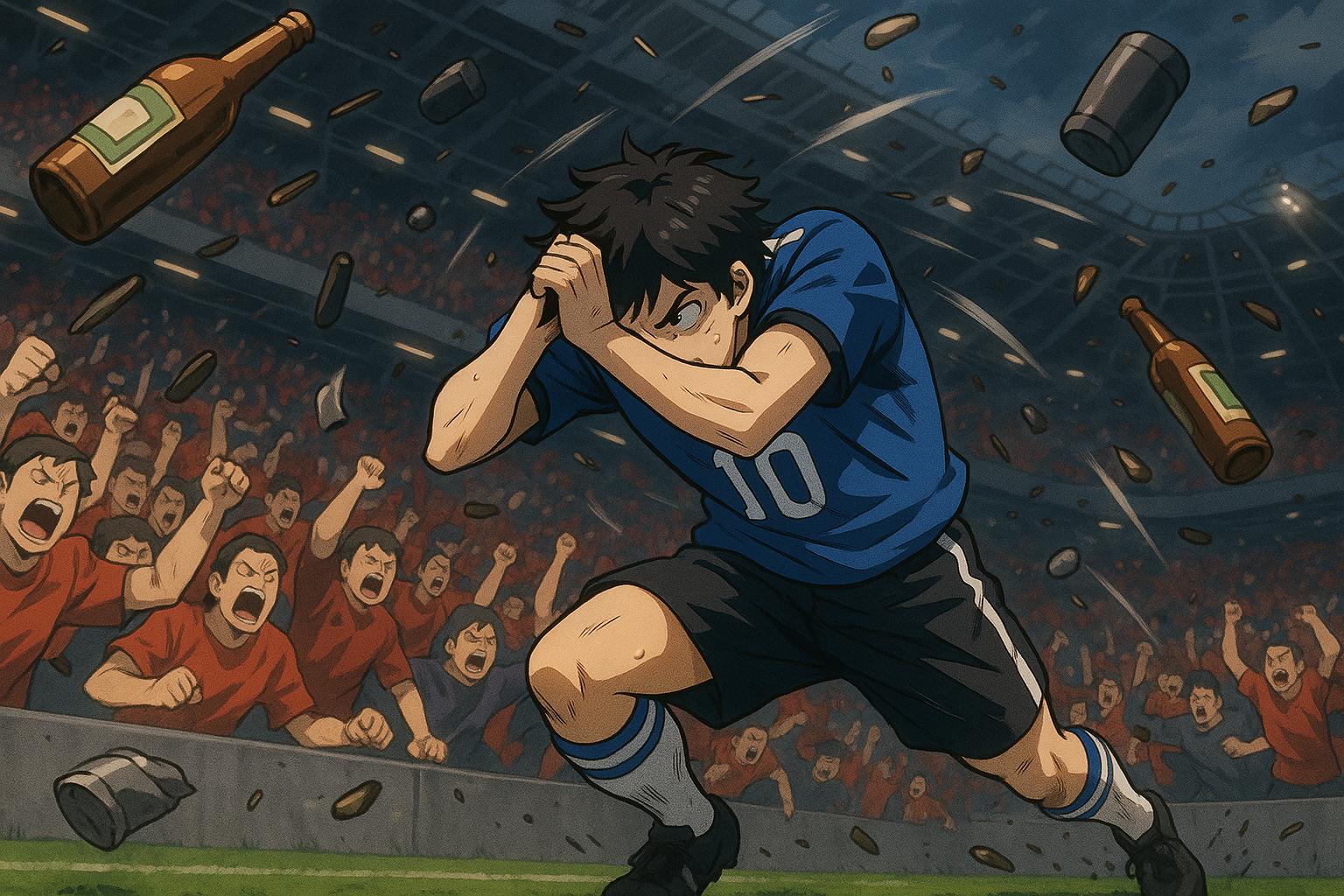Discussions surrounding the issue of fan behaviour at Scottish football matches have taken a more urgent tone, particularly with a recent spate of incidents that underscore a deep-rooted problem within the sport. At the heart of this debate is a question that challenges both cultural norms and commercial interests: should alcohol be sold on concourses at stadiums? Publicly, clubs strive to appear progressive and respectful of their patrons, yet behind closed doors, the financial lure of selling pints alongside pies is undeniable. The reality, however, is that many fans' behaviours often reflect a level of entitlement that is far from adult-like.
Recent events have only amplified these concerns. For instance, after Ross County's playoff tie, it was reported that a Livingston supporter spat at the assistant manager—a scenario that many observers found entirely believable given the current climate of impunity. Similarly, the injury sustained by Aberdeen defender Jack MacKenzie during a pitch invasion serves as a glaring example of this uptick in aggression. MacKenzie was struck by a seat hurled from the stands when Dundee United fans rushed onto the pitch to celebrate their team’s hard-fought victory. As pitch invasions become increasingly normalised across various levels of Scottish football, it's essential to scrutinise the underlying issues that continue to bubble beneath the surface.
Incidents such as the one involving Celtic’s goalkeeper, who faced a barrage of projectiles during a recent Old Firm derby, raise serious questions about safety in football. Reportedly, he had to contend with “30 to 40” objects being thrown at him, including a wine bottle that had found its way into the penalty area. Such occurrences are no longer isolated incidents; they have grown into a pattern of escalating hostility often fuelled by alcohol and drugs. Alarmingly, previous responses from clubs and authorities have been lacklustre, with condemnations swiftly followed by calls for police action that yield little in terms of accountability.
The Scottish Professional Football League's recent decision to penalise both Celtic and Rangers with a mere reduction of 500 tickets each for upcoming League Cup fixtures illustrates the ineffective governance that continues to plague the game. This penalty follows months of unacceptable conduct—an approach widely regarded as inadequate by fans, pundits, and authorities alike. The rules designed to manage supporter behaviour are often overlooked or ineffectively enforced, leaving clubs in a position of unchecked authority.
If Scottish football stadiums were to be treated as public houses, many would face mandatory closure due to their failure to maintain a safe environment. Questions ought to be raised about the scrutiny applied to safety certifications for football venues, especially considering the considerable sums clubs are willing to spend on players and technology like VAR while neglecting essential aspects of spectator safety.
What has emerged is a societal issue intertwined with football culture. Unlike other sporting events, incidents of violence and disorder appear to be a far more common reality for football matches than for rugby games or golf tournaments. Historical challenges faced by Scottish football—involving various youth subcultures—have been subdued in past decades, yet the current scene suggests that such challenges are re-emerging, requiring a concerted effort to reassess and address the sport's image.
The rise of supporter groups such as the Green Brigade and Union Bears may have given a voice to passionate fans, but they also contribute to an environment where aggressive behaviour can flourish unchecked. Recent provocations, such as banners demanding the removal of club executives for issues related to governance, serve as stark reminders of these factions’ influence. Their historical connections to controversial political sentiments only complicate matters, putting additional pressure on clubs trying to assert a positive public image.
In this context, the debates surrounding the potential lifting of the alcohol ban at Scottish football matches are particularly salient. While some argue that a relaxed policy could enhance the matchday experience, studies have warned that such a move may lead to increased alcohol consumption, diminished safety, and a rise in public disorder. The government has recently hinted at this issue, with health officials acknowledging the need for caution while considering any changes.
As Scottish football grapples with these multifaceted challenges, it is clear that a fundamental change in both perception and governance is necessary. The responsibility for preserving the sanctity of the game rests not only with fans but equally with clubs and governing bodies, who must collectively strive to foster an environment that promotes enjoyment rather than risk. The coming months are crucial, as they present an opportunity for stakeholders to reevaluate what kind of experience they wish to create and safeguard for fans and players alike. The path forward must be a commitment to enhancing security and responsible behaviour, ensuring that the sport's rich heritage does not succumb to the pitfalls of a vocal minority dragging it, quite literally, into the gutter.
Reference Map:
- Paragraph 1 – [1], [2]
- Paragraph 2 – [1], [3]
- Paragraph 3 – [4], [5]
- Paragraph 4 – [6], [7]
- Paragraph 5 – [1], [2]
- Paragraph 6 – [1], [3]
- Paragraph 7 – [4], [7]
- Paragraph 8 – [1], [2]
Source: Noah Wire Services
